
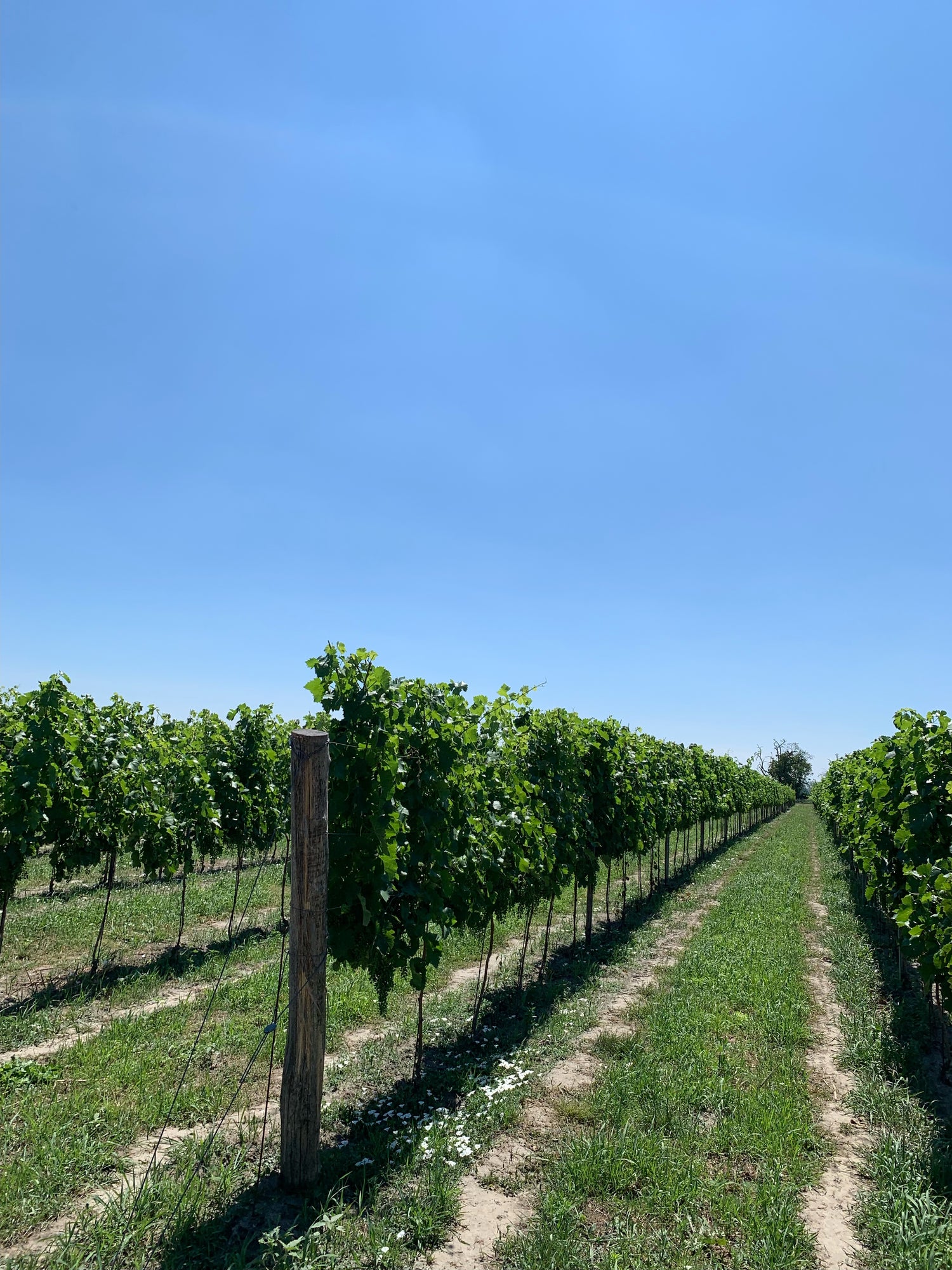
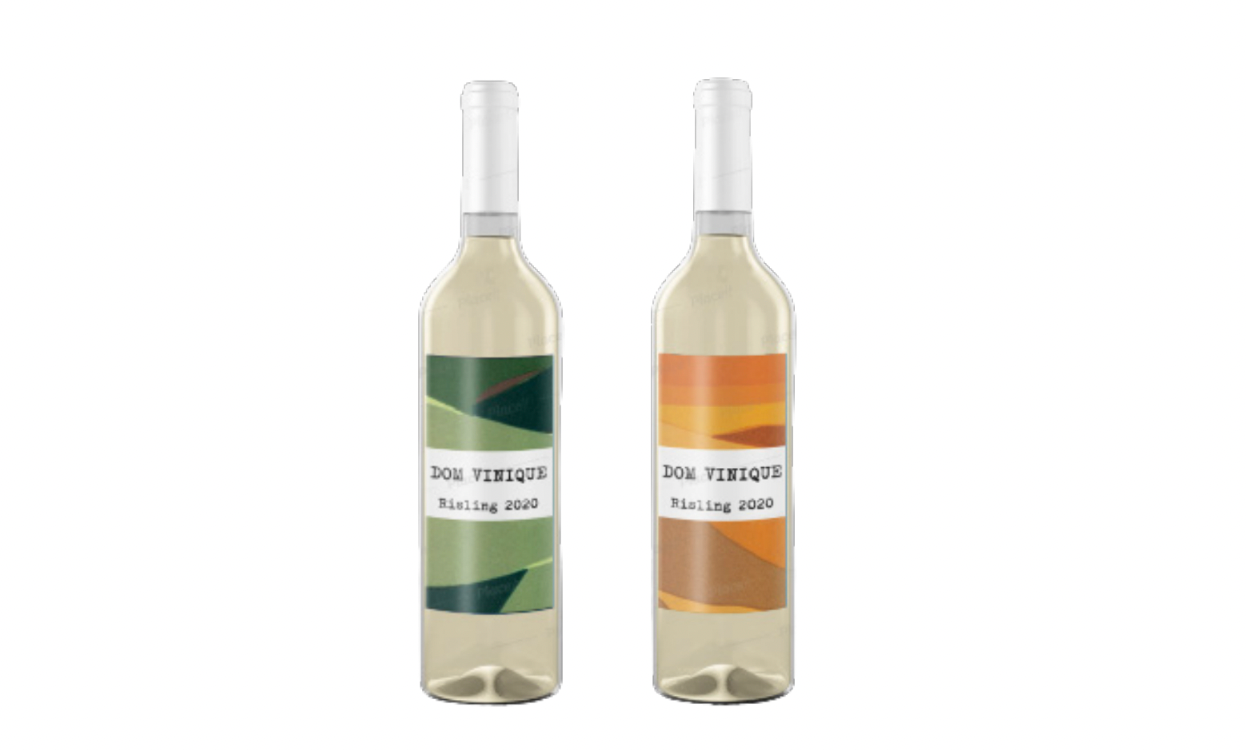

White wines
Our white wines reflect the fantastic terroir of Danubeland, Slovakia's best wine region. The soil conditions in the flat land between the two Danube rivers are unique for the production of white wine here at the same latitude as Alsace.
We produce wine that reflects the characteristics of the individual grape and from its best side. We reduce the grapes by up to 60%, in order to get as much juice, power and elegance in our white wines as possible.
We make white wine from single grapes, primarily in steel tanks, but our wine can, depending on the grape, vintage and our winemaker's vision, have a touch of barrel aging.
White wine varieties
Chardonnay
Chardonnay is a cross between the blue grape pinot noir and the white Gouais Blanc. Chardonnay is not an aromatic grape. This means that the grape does not smell and taste very much in itself, but is instead influenced by other factors.
We use both oak barrels and steel tanks in our production. This means that the wine has both the terroir-driven character with fresh acidity, chalky minerality and notes of citrus and green apples, as we know it from the elegant Burgundian wines. In addition, the casks add some richness, buttery character, tropical fruit and soft tannins to our wines.
A full-bodied chardonnay goes well with dishes with rich sauces such as hollandaise and is wonderful with strong cheeses. Light wines go well with light cheeses and with light and fresh food. If you have soft and creamy cheeses on the cheese board, a little more sweetness in the wine will do you good.
Grüner Veltliner
The wines from this grape are typically dry, with a large body. The wine is fresh and herbaceous with a taste and aroma of freshly cut grass, pear, citrus and yellow stone fruits. You can sense a hint of white pepper.
With the Danube on both sides of our field, Grüner Veltliner is the grape on its home turf. Our terroir with rich, fertile soil at the top, lime and minerals in the depths and layers of million-year-old volcanic ash provide conditions that you can otherwise only find in the famous Austrian areas such as Kamptal, Wachau and Kremstal.
Grüner Veltliner is a bit of a miracle wine for food. It manages to match the spicy Asian dishes at the same time as it goes well with dishes with fish and light meat.
Welschriesling
The name means "the foreign Riesling", and as a grape is not related to the German Riesling. As we strongly reduce the grapes on the plants, we achieve a low yield which, in turn, has a high quality. The wine has both dryness and light sweetness.
Welschriesling wines are available in very different qualities, from young, fresh wines to predicate wines. Welschriesling is also often used to make sparkling wine. Younger wines are acidic and have a fruity bouquet with notes of green apples or citrus fruits. The wine has a mineral character from the area's terroir.
Welschriesling is a fruity white wine and goes particularly well with light dishes such as salads, cold starters or pasta. The wine is excellent as a summer wine.
Golden Muscatel
Our Golden Muscatel is made from the Muscat grape, which is an aromatic and perfumed grape that is widespread throughout the world. This grape variety is among the oldest grapes used for wine production. It comes in several different varieties, of which the green is the most cultivated.
Dom Vinique's vineyard is located at the same latitude as Alsace, which allows for the production of the drier style of Muscat. Muscat is one of the few grapes that carries its characteristic flavor from the grape in the field to the wine in the bottle. The wine has scent notes of jasmines and roses. The taste is fruity and sweet with its own grape notes, as well as tangerine, ripe melon, pear and peach. A true bombardment of taste and aroma.
Golden Muscatel is very versatile and can be used for many different dishes, e.g. spiced Asian dishes, , blue mold or goat cheese, desserts, fruit salads, pies, pancakes with fresh or pickled exotic fruits, ice cream or sorbet - or simply as an aperitif.
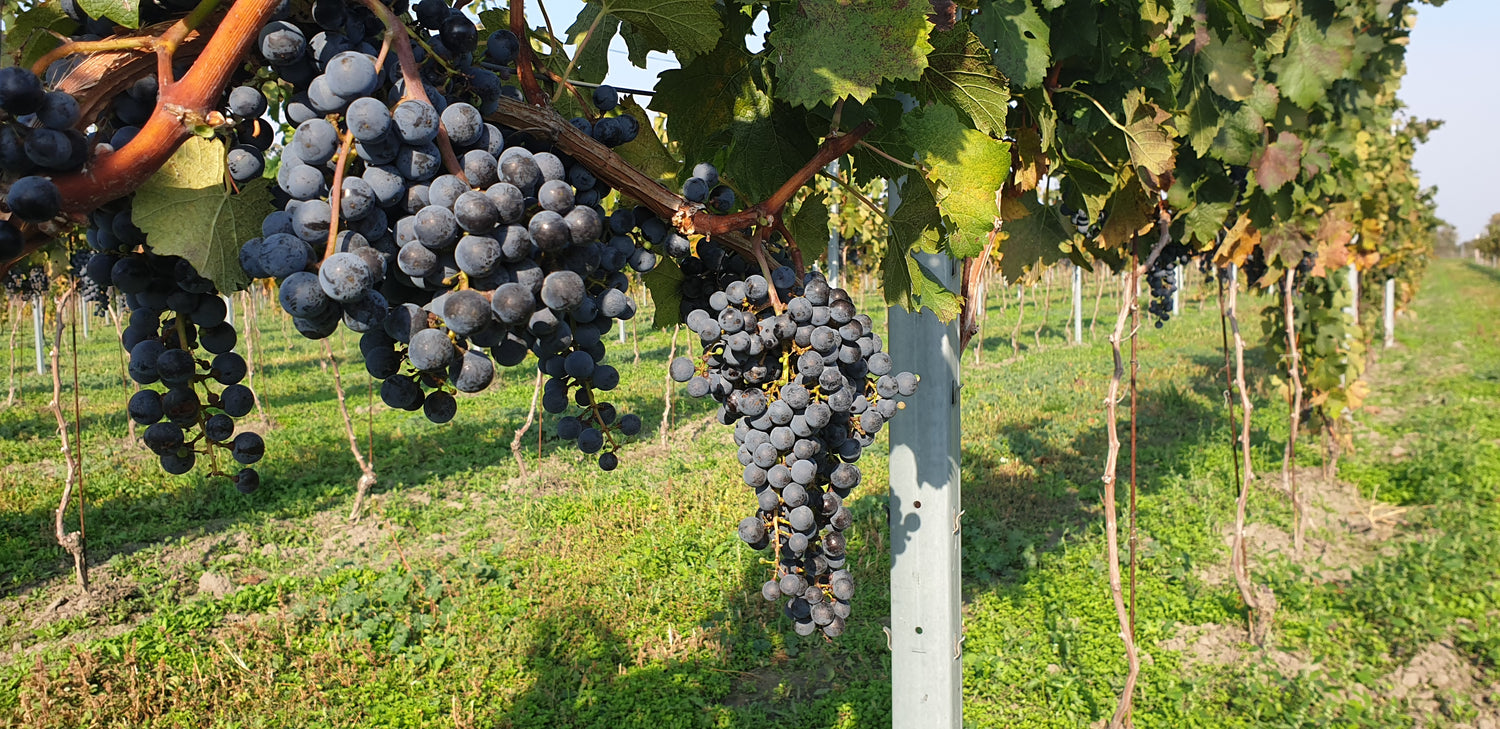
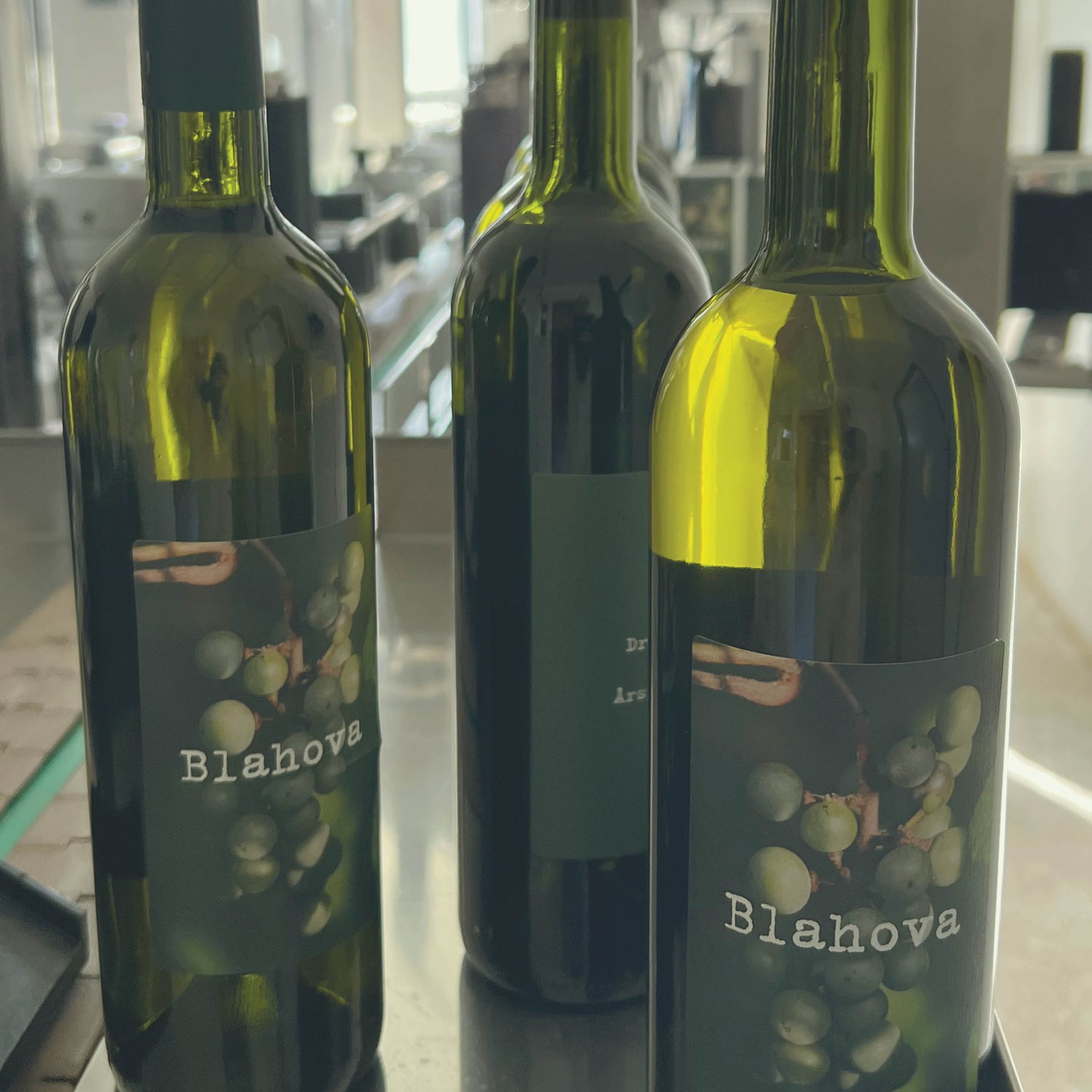
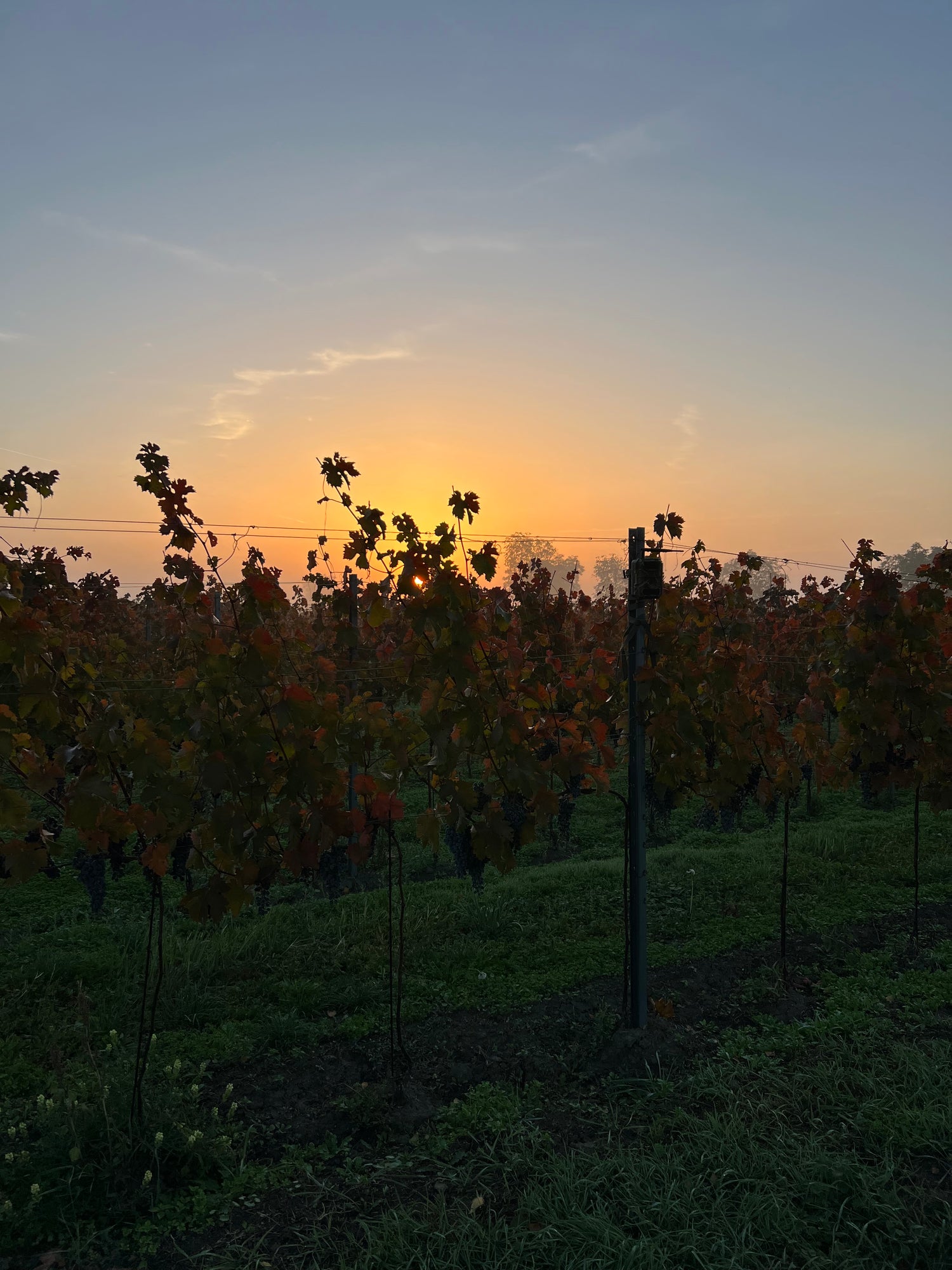
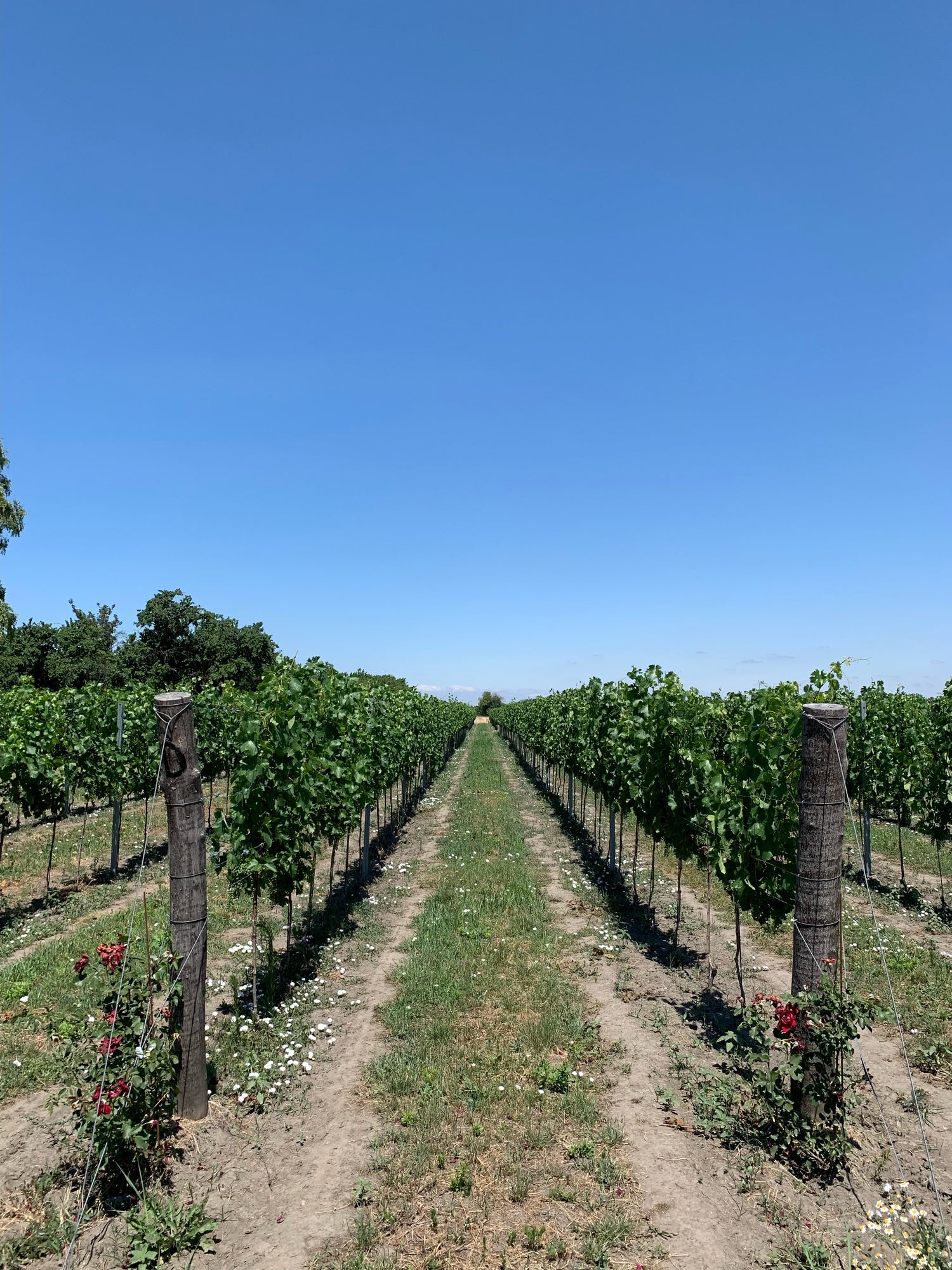
Red wine
The red wines from Domvinique express the area's unique terroir here between the two Danube rivers in Slovakia's best wine region. In close interaction between the grapes' potential and our winemaker's innovative strategy, we produce special experiences from elegant bordeaux blends to complex and charming wine from Slovakia's best grape, Dunaj.
We use our expertise, love of wine and care so that the wines express the best qualities of the grapes. We reduce our grapes on the plants by up to 60%, so that the grapes and thus the wines reach their full potential.
Red wine varieties
Danube
Dunaj is Dom Vinique's “Dark Horse”. The grape was developed as a hybrid by the Vine Research Institute of Bratislava in 1958 by Dorota Pospísilová and Andrej Korpás, but only officially registered in 1997. Dunaj is a cross between Sankt Laurent, Muscat Bouchet and Portugieser.
It achieves its full potential in the warm, southern Slovakia, where there is perfect terroir for the grape with clayey, fertile soil with both old volcanic ash, fossils and minerals in depth.
The Dunaj wine has a deep dark red color. It has velvety, soft and creamy notes à la Amarone. Also notes of blackcurrants, cherries, chocolate, tobacco and light notes of cinnamon.
Dunaj goes well with red meat, heavily spiced food and chocolate desserts with a high cocoa content.
Cabernet Sauvignon
Cabernet Sauvignon is the most well-known and planted blue grape in the world. You can recognize the grape variety by its small grapes, which are clear blue in colour, its thick skins and many seeds in relation to the pulp.
Cabernet Sauvignon is a natural cross between Cabernet Franc and Sauvignon Blanc.
The wine has aromas and flavors of blackcurrants, ripe, dark cherries, cedar wood, graphite, spice notes and a touch of Christmas baking spice. The grape's thick skin and aging in oak barrels for 12-18 months give the wine mature tannins.
The wine goes particularly well with steaks from the grill with spicy sauces, gyros with lamb or roast lamb. In addition, the wine is good with duck, although without the traditional, Danish, sweet Christmas accompaniment.
Merlot
The Merlot grape originally comes from Bordeaux, where it is among the most cultivated grapes.
Wine made from the Merlot grape tends to be softer, rounder and more fruity than Cabernet wine. The Merlot grape has a thinner skin and less tannin than Cabernet. Merlot ripens earlier than Cabernet Sauvignon, and it has an easier time forming sugars.
The grape gives our wine a velvety and rounded taste with plum-like nuances. It also contains aromas of blackberries, raspberries and light notes of chocolate. Barrel aging for 12-18 months gives the wine notes of chocolate, cedar and dill.
Merlot is suitable for dishes with game, chicken, duck, Christmas food, rich dishes with beef and stews.
Cabernet Franc
Cabernet Franc is a fine French grape variety. Cabernet Franc is much less known and widespread than its sister grape Cabernet Sauvignon. Cabernet Franc is softer than Cabernet Sauvignon and it has less tannin and color. The grape has the potential to become excellent wine and to contribute to other grapes in blends.
Cabernet Franc is elegant wine, with a nice soft texture and light perfume on the nose. With aromas of strawberries, raspberries, cranberries, grilled peppers as well as pepper and tobacco, you get a structured and light red wine in the mouth. We also use the wine to soften the more potent Cabernet Sauvignon and add that elegance.
Cabernet Franc wines go well with light meat dishes such as lamb and pork.

